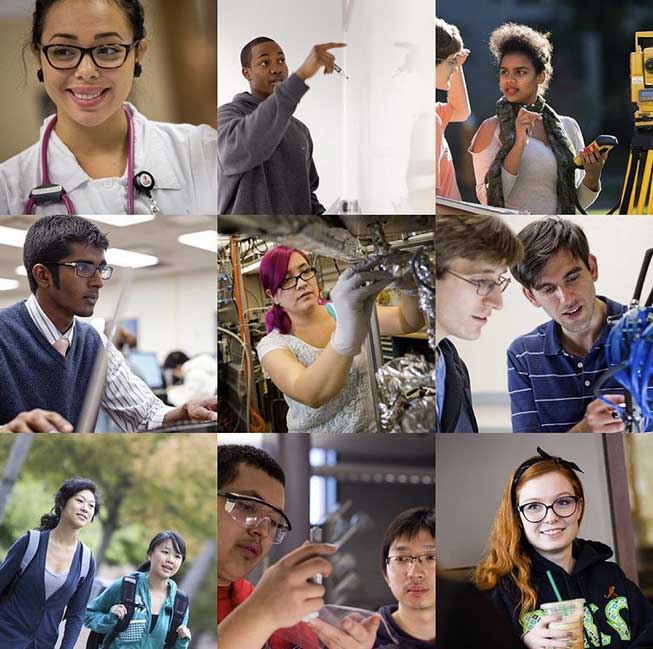Images and videos are the only media types shared on Instagram. But people who can't see or hear that information—whether because of a temporary or permanent disability—need to be able to know what you're sharing. They have assistive technologies that can help, but you need to give them the information to do so.
We'll get into the specifics, but please note:
- Photo posts need to include alt text.
- Video posts either need captions built into the video plus a video description, or (video without captions) need a video description and captions below the post copy.
Photo Image Description
Following post copy, use the following formats to describe your images:
Single Photo
To edit a photo’s “Alt Text,” select the three dots (usually) located at the top right above the photo post. Click “Edit.” The option to “Add Alt Text” appears over the photo, in the bottom right, just above the caption. Click on “Add Alt Text” to include a short (fewer than 120-character) description stating what the photo shows. When a post includes a collection/carousel of photos (not a collage), follow these same steps. Instagram now gives the option to include a description for each photo in a collection/carousel.
Example: Mascot Spartie displays a Case Western Reserve license plate in front of the Linsalata Alumni Center.
Photo Collages
Photo collages are a bit trickier, as there can be so many photos included in one larger image. There is usually not an easy way to add short (120 character) alt text to describe up to nine images, so we recommend two options, using this collage as an example.
Option 1
Insert your caption, followed by: #accessibility [Image description (L-R): 1. XXX 2. XXX 3.XXX].
Example: #accessibility [Image description (L-R): 1. Female student with stethoscope 2. Male student writing on dry erase board 3. Two female students using surveying equipment 4. Male student on computer 5. Female student in engineering class 6. Two male students discussing technology 7. Two female students with backpacks walking 8. Two male students working on project 9. Female student with iced coffee].
Option 2
Use the alt text option, if your photos can be described clearly and concisely.
Example: #accessibility [Image description: Collage of nine images of Case Western Reserve students in classrooms, labs and around campus.]
Video
We recommend that you always use video captions in your videos so you don’t have to provide a transcript of captions in your post.
However, if your video does not feature built-in captions, you need to provide the full transcript within your caption.
Insert your caption, followed by: #accessibility [Video captions: XXX].
Example: #accessibility [Video description: Celest Engle (CWR `18) “I’m really excited about commencement. I’m originally from Paris France. My mother and father are flying all the way from Paris to see me graduate. They haven’t been on campus since I moved in as a freshman. Next year, I’ll be working in St. Louis for Boeing as part of their business career foundation program. And the fact that the alumni network is so prevalent here at Case, I was able to land a job. And at Case Western Reserve I’ve learned to be a great team member, and those leadership skills and to understand how can I utilize everyone’s strength to make the end product great. What I’m going to miss the most is the people. I’ve met people from all over the world. And that has enabled me to understand different cultures and their experiences. We’ve already made plans to come back for homecoming and visit each other. Friendships I’ve made here have enabled me to become the person I am today.”]
Instagram Stories
Because Instagram Stories are newer, there still are some questions surrounding their use. However, we have two overarching guidelines:
- Don’t include text in your uploaded graphics; only use in-app text. (Note: We are aware the university's brand font, Titillium, is not an option in Instagram stories, and that’s OK).
- Keep videos short (under 15 seconds each) and caption everything that is said using the text tool.


